Affiliate disclosure: This post may contain affiliate links. Please see our Privacy Policy.
Tallow soap is incredibly nourishing for skin, and it’s easy to make at home. Make a 100% tallow soap as a gentle cleanser, or add other oils like olive and coconut for more cleaning power.
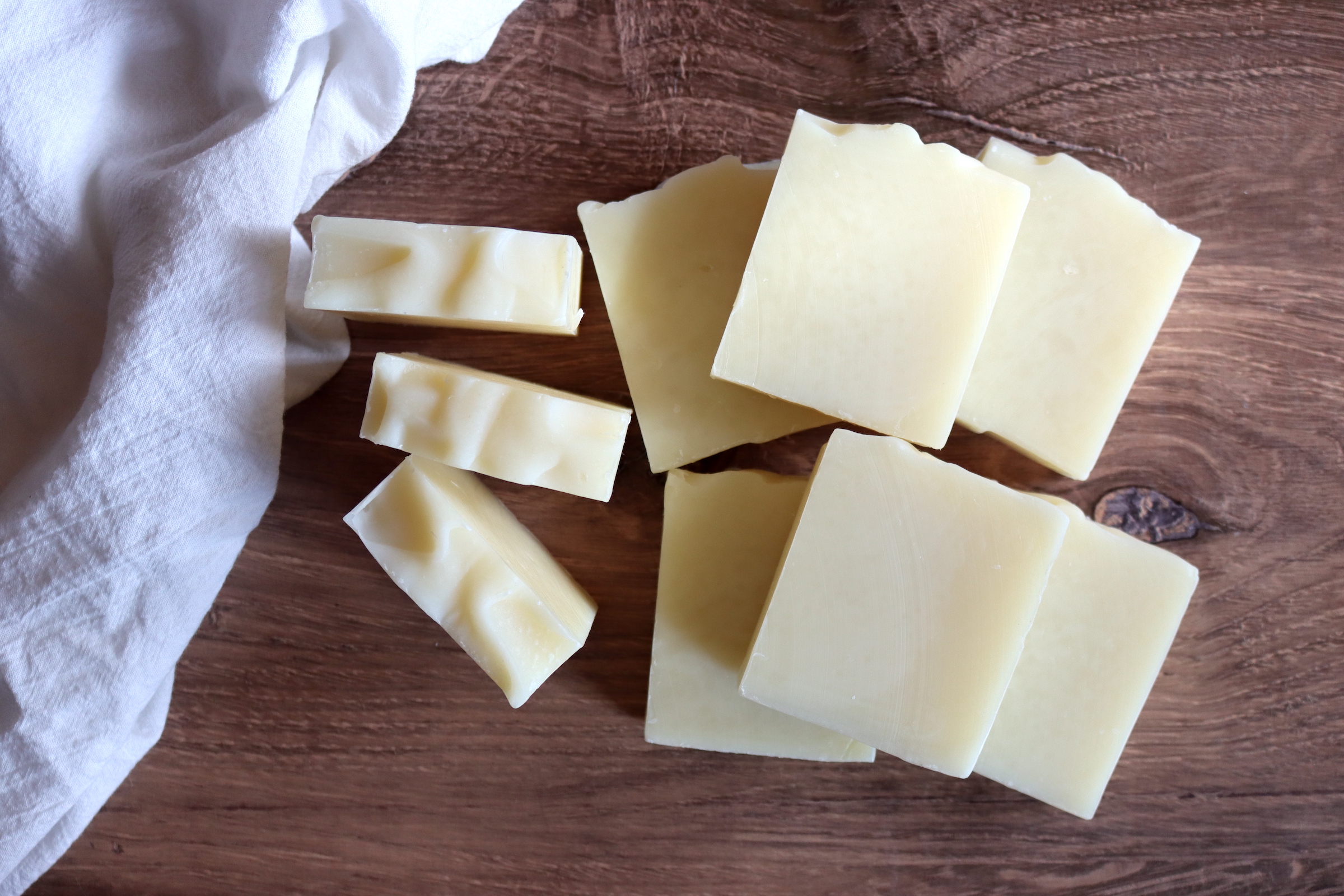
When you hear tallow soap, most people picture mountain people living off the land. Washing wood ash in an old barrel to make lye, and then stirring a pot of tallow to make a coarse soap for washing laundry (or for bathing in an old wash tub, once a week, whether you need it or not).
It’s associated with old-fashioned living, and a harder way of life.
In reality, tallow soap is actually incredibly nourishing and moisturizing, and it’s gaining popularity in modern skin care circles for its ability to condition skin while it gently cleanses.
Yes, emphasis there on gently cleanses.
Tallow soap, believe it or not, is not harsh. It’s actually not all that good at “washing” in the traditional sense, and it’s commonly mixed with harsher oils that have more cleansing power (like coconut oil).
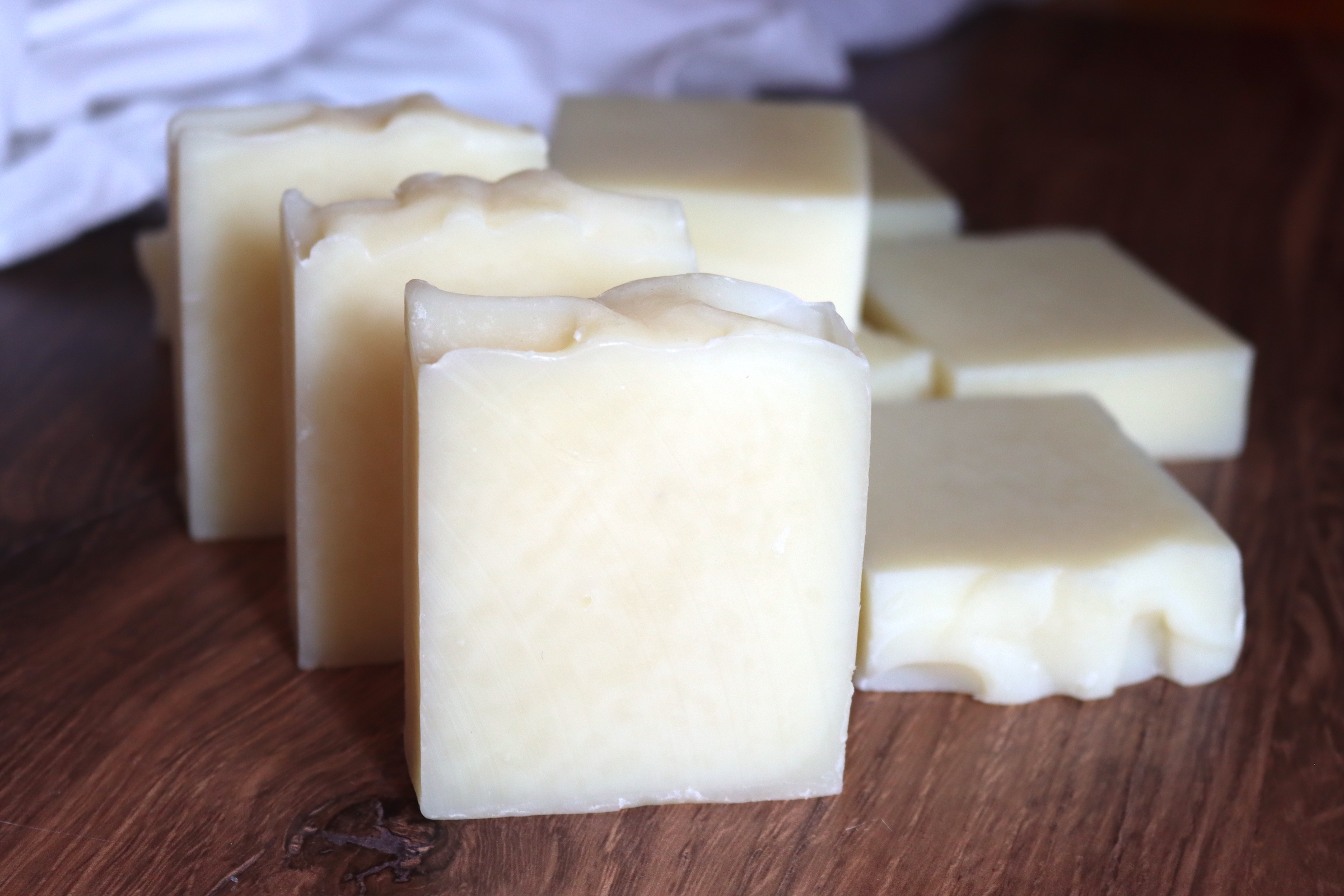
An old-fashioned homestead soap made with just tallow and lye is better for delicate skin and facial cleansing than it is for laundry. Coconut oil (and many other vegetable oil-based soaps) are harsher, and strip oils efficiently, so if you’re going to make homemade laundry soap (or dish soap) that’s the only place it makes sense to keep it vegan.
Truth be told, if you want to nourish your animal skin, then animal products are the way to go.
This year has seen an incredible resurgence in the popularity of tallow body butter, and it seems like every influencer is slathering their face with tallow on Instagram…but they’ve just rediscovered the wheel.
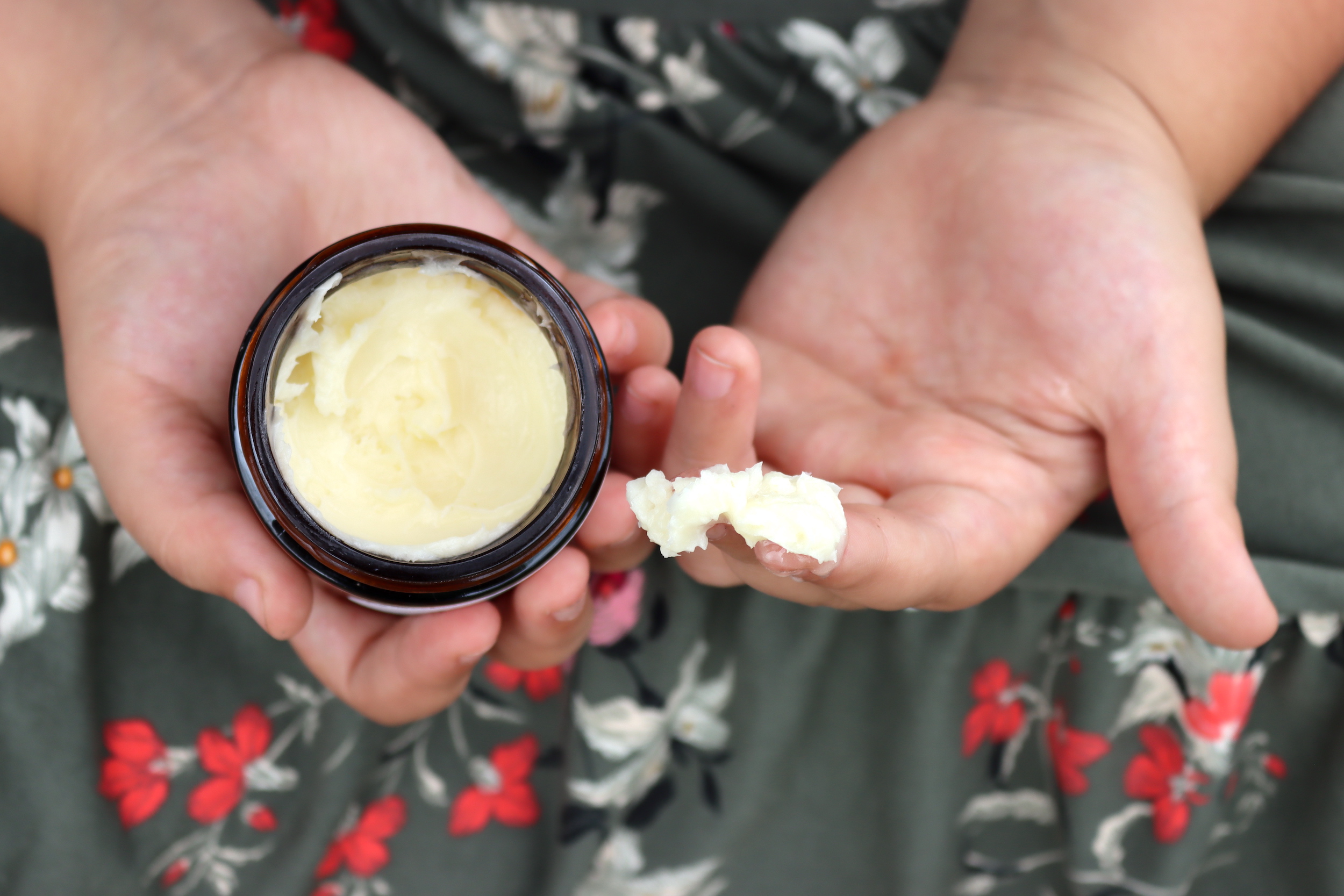
Tallow in soap, body products, and skincare products has been common practice for millennia, literally since before the wheel.
This old-fashioned tallow soap recipe may be antique, but it has stood the test of time, and people are once again realizing that there’s no reason to change a good thing.
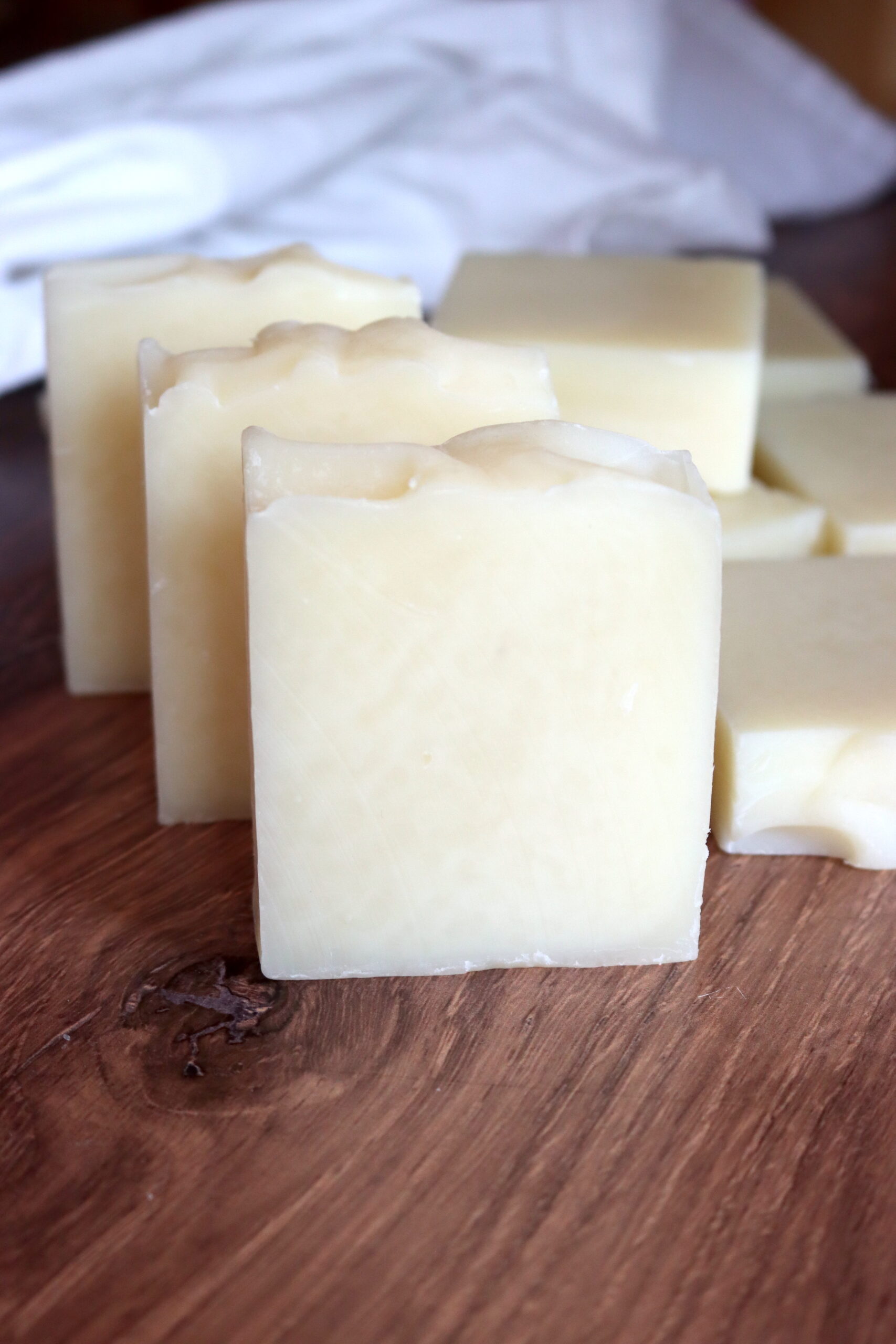
Benefits of Tallow Soap
So, as I mentioned, tallow soap is incredibly nourishing to skin, and pure tallow soap was used as an old-fashioned remedy for poison ivy and other similar skin conditions.
It has a low, creamy lather that’s enough to coat the skin in small bubbles, but nothing like the full bubbly lather you get from modern soaps with added palm oil or coconut oil.
Soap made with tallow cures and hardens quickly, and forms a very hard, long-lasting bar.
You can make soap with 100% tallow, but more commonly, coconut oil and olive oil are added.
Coconut oil is an excellent cleanser that produces a rich, foamy lather, but it creates a harsh soap on its own. Olive oil creates a luscious soap (namely, castile soap) that’s also nourishing, but creates minimal lather and takes a long time to harden (and sometimes never fully hardens, creating a soft bar).
By mixing tallow, coconut oil, and olive oil, you can create a balanced bar that’s both nourishing and cleansing. These days, that exact same “perfectly balanced soap” is made with palm oil, replacing tallow instead (so that it’s vegan).
Palm oil, unfortunately, has devastating environmental consequences, and though it does harden a bar like tallow, it’s not nearly as nourishing.
In this case, palm oil soap is as margarine is to butter. It does make it “plant-based,” but the environment and the end product suffer as a result.
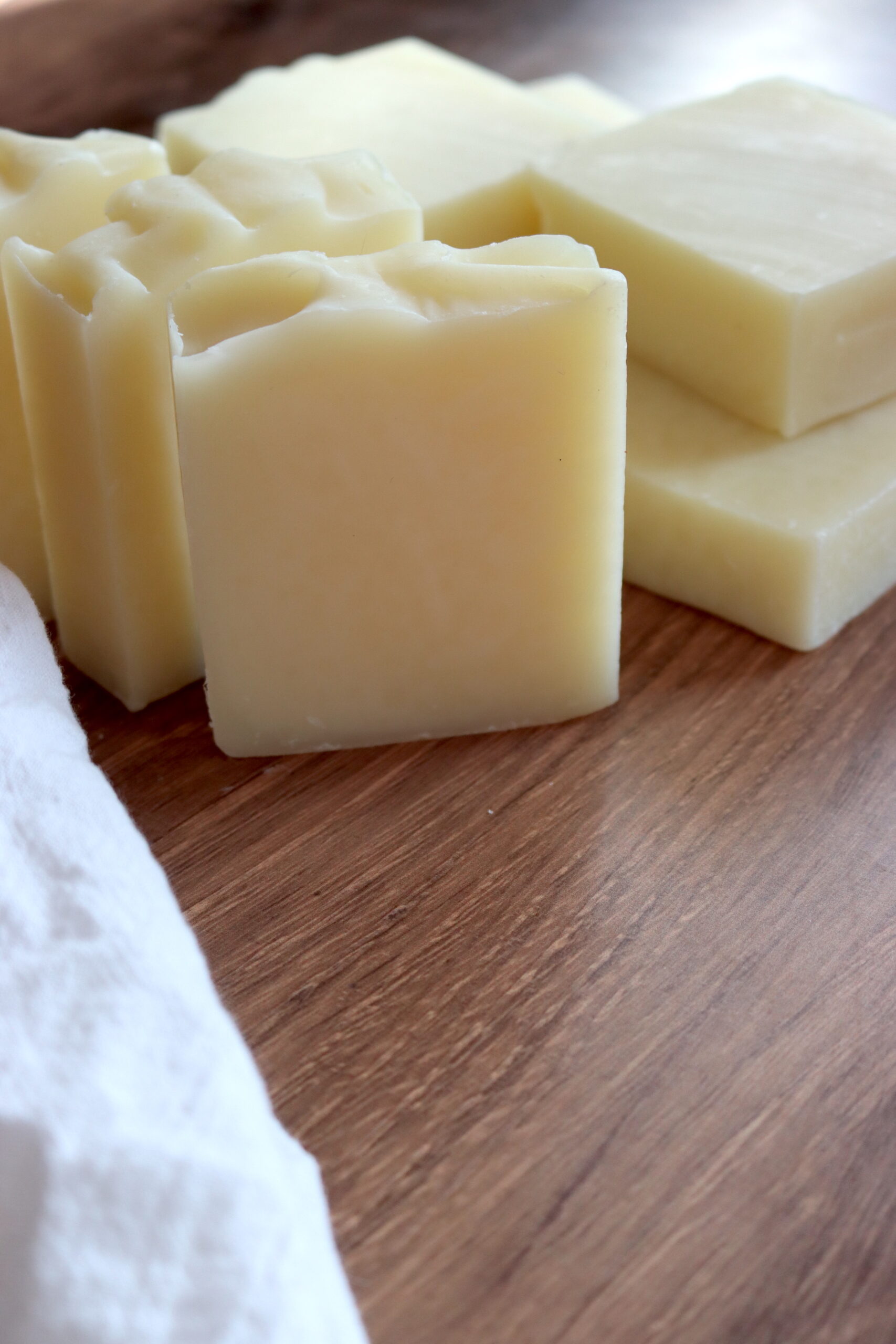
Where to Buy Tallow Soap
If you’re not up for making your own soap, tallow soap is still readily available in stores and online. Believe it or not, it’s more common than you’d think.
Modern soap packaging will often include the ingredient “sodium tallowate” which simply means tallow that has reacted with lye to make tallow soap. It’s kind of their crafty way of trying to hide the fact that this fancily packaged spa bar of soap actually owes it’s nourishing properties to rendered tallow.
Often, commercial soap bars contain all manner of additives that are not skin-friendly, like titanium oxide (a whitener) and other less-than-ideal ingredients. If you’re really looking for a natural, old-fashioned, nourishing bar of tallow soap, your best choice is small makers on etsy or a local craft market.
Several of the soapmakers at our local farmer’s market make tallow soap, but oddly, they don’t advertise it for fear of backlash. The tallow is listed in the ingredients on the back, if you care to look, but otherwise, the farm stand simply says “natural soap” or “nourishing handmade soap.”
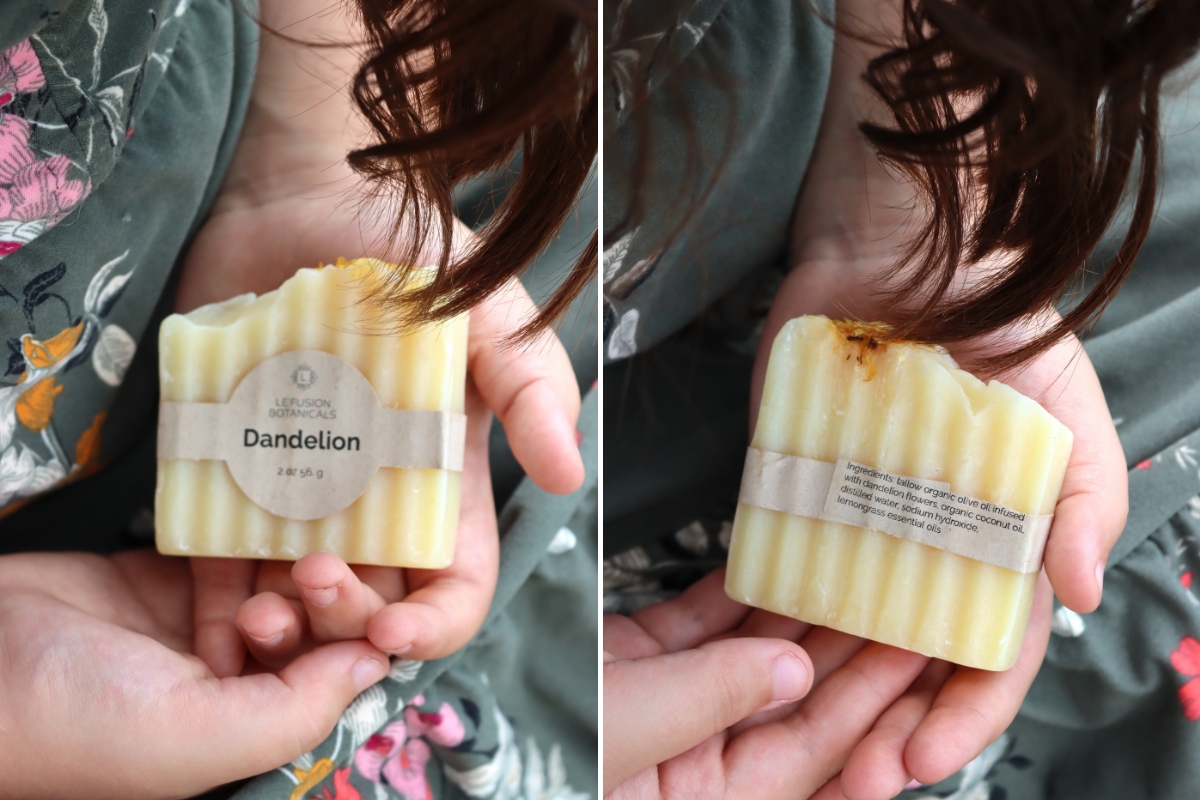
Ingredients for Tallow Soap
The basic ingredients for pure tallow soap are just tallow, lye, and water. That gives you what’s called a 100% tallow soap, as all the oils in the mix are tallow.
Use the cleanest rendered, highest quality tallow you can find. If you properly render tallow, it has no smell, and it’s pure white in color. The quality of the tallow soap is dependent on the quality of the inputs, and if your tallow has a smell, your soap will have a smell.
If you can’t find pure, odor-free tallow, you can render tallow at home with a crock pot, all you need is a bit of beef suet.
For a single batch of 100% tallow soap to fill a standard loaf soap mold (7 to 8 bars, or about 2 1/2 pounds of soap), you’ll need:
- 28 ounces (794 g) of tallow
- 8.75 ounces (248 g) distilled water
- 3.7 ounces (105 g) lye
To make a partial tallow soap that’s balanced, both cleansing and nourishing, and not too hard thanks to extra olive oil, here’s what you’ll need:
- 12 ounces (340 g) of tallow
- 8 ounces (227 g) of coconut oil
- 8 ounces (227 g) of olive oil
- 8.83 ounces (250 g) distilled water
- 3.95 ounces (112 g) lye
And if you really want to get fancy, you can make a tallow soap with oats, milk, and honey. Milk acts as a natural skin conditioner and helps boost lather. Honey helps skin retain moisture, and oats soothe itchy, dry skin.
This recipe incorporates tallow, along with the other oils for a balanced soap, plus the mix-ins that help create the perfect skin-nourishing bar of tallow soap:
- 12 ounces (340 g) of tallow
- 8 ounces (227 g) of coconut oil
- 8 ounces (227 g) of olive oil
- 8.5 ounces (241 g) of frozen milk (cow, goat, or other)
- 0.5 ounces (14 g) distilled water
- 3.95 ounces (112 g) lye
- 1 tsp (5 ml) honey mixed with 1 tsp (5 ml) water
- 1 Tbsp (7 g) powdered oats
All three recipes make about 2 1/2 pounds of soap, or about 7 to 8 bars in a standard loaf mold.
You can add essential oil for fragrance if you like, and generally, for this amount of soap, you’d add about one ounce of essential oil, or roughly 30 to 35 grams. The total amound depends on the oil you choose, as well as how strong you want the scent.
All three soaps are made in the same way, with some extra instructions when working with frozen milk for the last recipe.
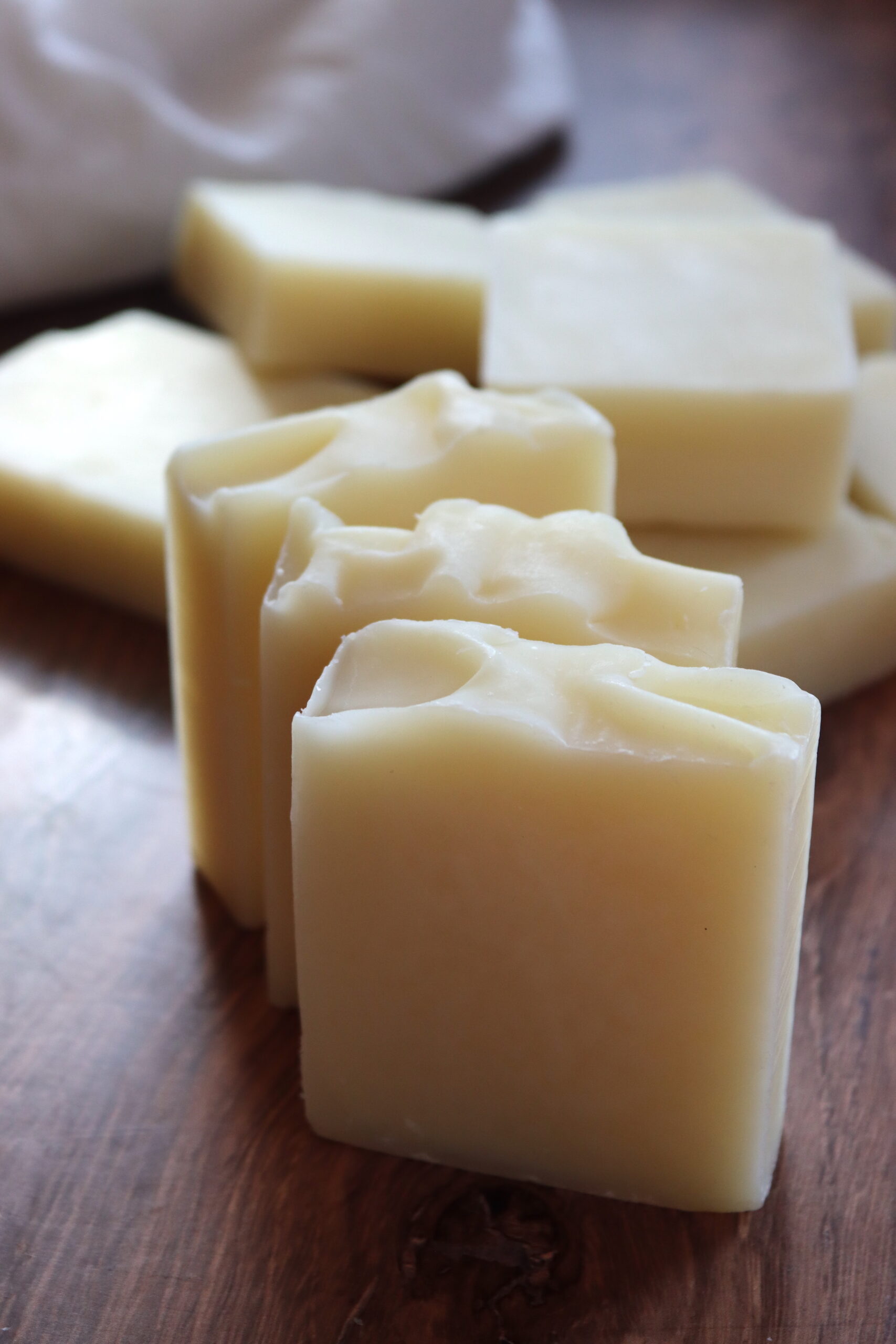
How to Make Tallow Soap
To make tallow soap, the process is the same as making just about any cold process soap at home. Before you start, I’d suggest you read my beginner’s guide to soapmaking so you understand the equipment and terminology.
I’d also suggest reading my guide to soapmaking mistakes (and how to avoid them). The main things here are to:
- wear protective clothing (long sleeves, eye protection, etc)
- work in a well-ventilated area
- add the lye to water (not the other way around)
All of the recipes for tallow soap listed above have the same basic instructions.
Start by putting on protective clothing, and ensuring your work area is clean and well-ventilated.
Stir the lye into the distilled water, carefully adding the lye a bit at a time.
If making the milk soap recipe, you’ll sprinkle the lye over the water and frozen milk cubes, adding a tiny bit at a time, and allowing the reaction to slowly melt the milk. The idea here is to keep the temperature low, so the milk sugars don’t carmelize, so take your time.
Once all the lye is stirred into the mix, set the lye water aside to cool to 100 to 110 degrees F (38 to 43 C). This will take 20 to 40 minutes, depending on the ambient temperature.
Melt the lard (and other oils, if using) and bring the mixture to roughly 100 to 110 F to roughly match the temperature of the cooled lye water.
Gently pour the cooled lye solution into the oils, stirring by hand or using an immersion blender, until the mixture reaches trace.
Finally, add in any mix-ins (if using), namely powdered oats, diluted honey or essential oils.
Pour the mixture into soapmaking molds, either as individual molds or as a full loaf of soap for cutting later.
Allow the soap to cure in the molds for about 2 days, until it’s firm enough to remove. Once the soap is firm, remove it from the mold. If you’ve made a loaf of soap instead of individual bars, cut the soap at this point.
Place it in a well-ventilated space to cure for about 4 to 6 weeks, flipping the bars every week or so.
At this point, the soap is ready to use or store.
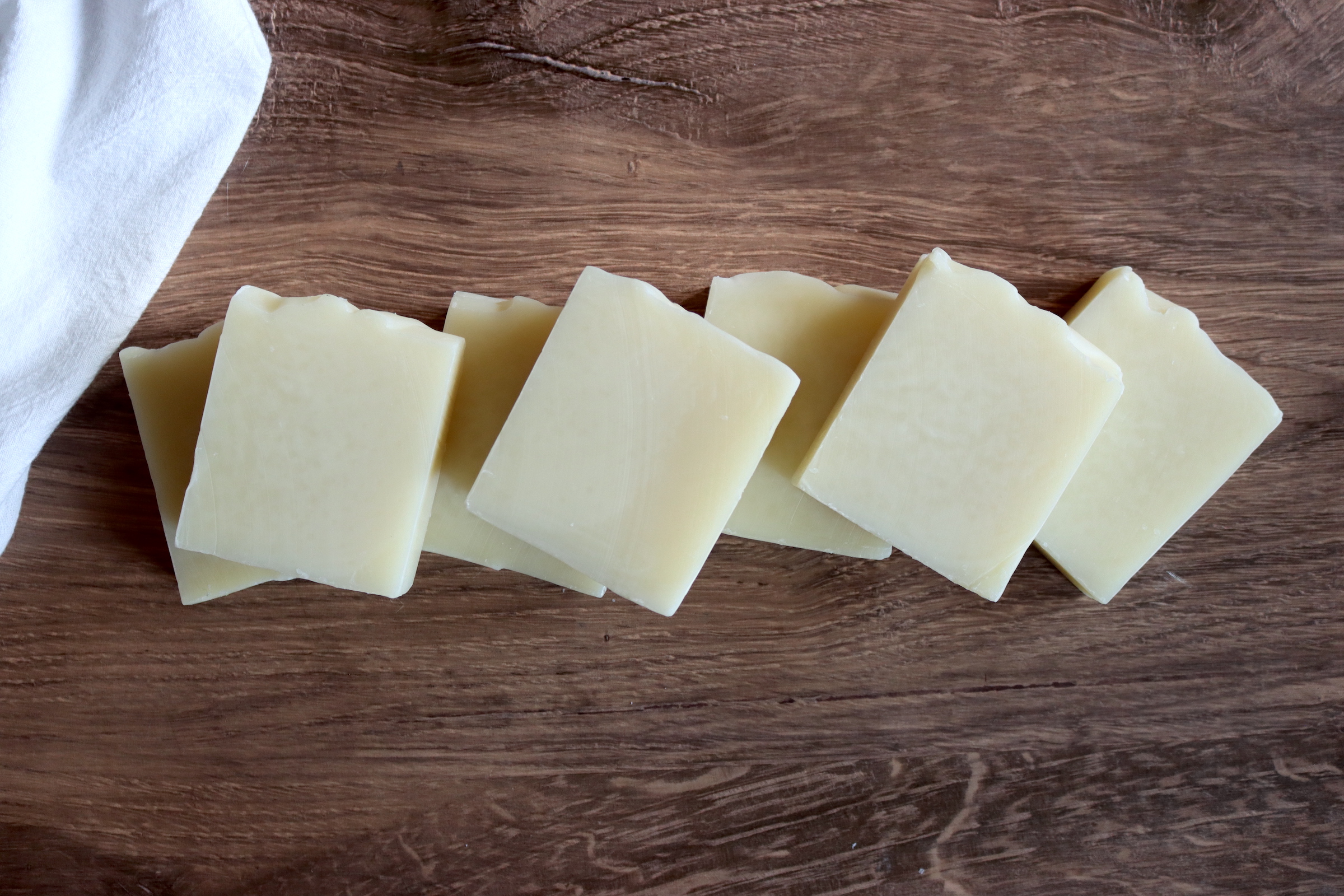
Soapmaking Recipes
Looking for more soapmaking recipes?
- 20+ Soapmaking Recipes for Beginners
- How to Make Soap at Home
- How to Make Melt and Pour Soap
- Goats Milk and Honey Soap
- Breast Milk Soap
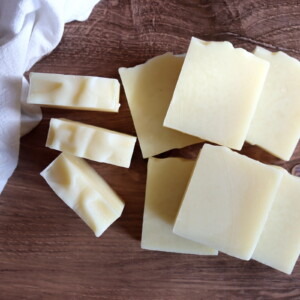
Homemade Tallow Soap
Equipment
- Plastic (non reactive) measuring cups and containers
Ingredients
Balanced Cleansing Tallow Soap
- 12 ounces tallow 340 g
- 8 ounces coconut oil 227 g
- 8 ounces olive oil 227 g
- 8.83 ounces distilled water 250 g
- 3.95 ounces lye 112 g
Luxurious Tallow Soap with Milk and Honey
- 12 ounces tallow 340 g
- 8 ounces coconut oil 227 g
- 8 ounces olive oil 227 g
- 8.5 ounces frozen milk 241 g, cow, goat, or other
- 0.5 ounces distilled water 14 g
- 3.95 ounces lye 112 g
- 1 tsp honey 5 ml honey, mixed with 1 tsp (5 ml) water, total of 10ml honey/water solution
- 1 Tbsp powdered oats 7 g
Instructions
- The recipe above has ingredients for three variations on tallow soap. Choose one and follow the soapmaking instructions, do not use the ingredients for all three at once. All of the recipes for tallow soap listed above have the same basic instructions.
- Start by putting on protective clothing, and ensuring your work area is clean and well-ventilated.
- Stir the lye into the distilled water, carefully adding the lye a bit at a time.
- If making the milk soap recipe, you'll sprinkle the lye over the water and frozen milk cubes, adding a tiny bit at a time, and allowing the reaction to slowly melt the milk. The idea here is to keep the temperature low, so the milk sugars don't carmelize, so take your time.
- Once all the lye is stirred into the mix, set the lye water aside to cool to 100 to 110 degrees F (38 to 43 C). This will take 20 to 40 minutes, depending on the ambient temperature.
- Melt the tallow (and other oils, if using) and bring the mixture to roughly 100 to 110 F to roughly match the temperature of the cooled lye water.
- Gently pour the cooled lye solution into the oils, stirring by hand or using an immersion blender, until the mixture reaches trace.
- Finally, add in any mix-ins (if using), namely powdered oats, diluted honey or essential oils.
- Pour the mixture into soapmaking molds, either as individual molds or as a full loaf of soap for cutting later.
- Allow the soap to cure in the molds for about 24 to 48 hours, until it's firm enough to remove. Once the soap is firm, remove it from the mold. If you've made a loaf of soap instead of individual bars, cut the soap at this point. Be aware that tallow soap can be hard to cut if left as a loaf too long, so be sure to cut the bars as soon as the loaf sets.
- Place it in a well-ventilated space to cure for about 4 to 6 weeks, flipping the bars every week or so.
- At this point, the soap is ready to use or store.
Notes
DIY Guides
Looking for more DIY guides?
- How to Process Soil into Clay for Pottery
- How to Make Chocolate from Scratch
- Beginner’s Guide to Candlemaking
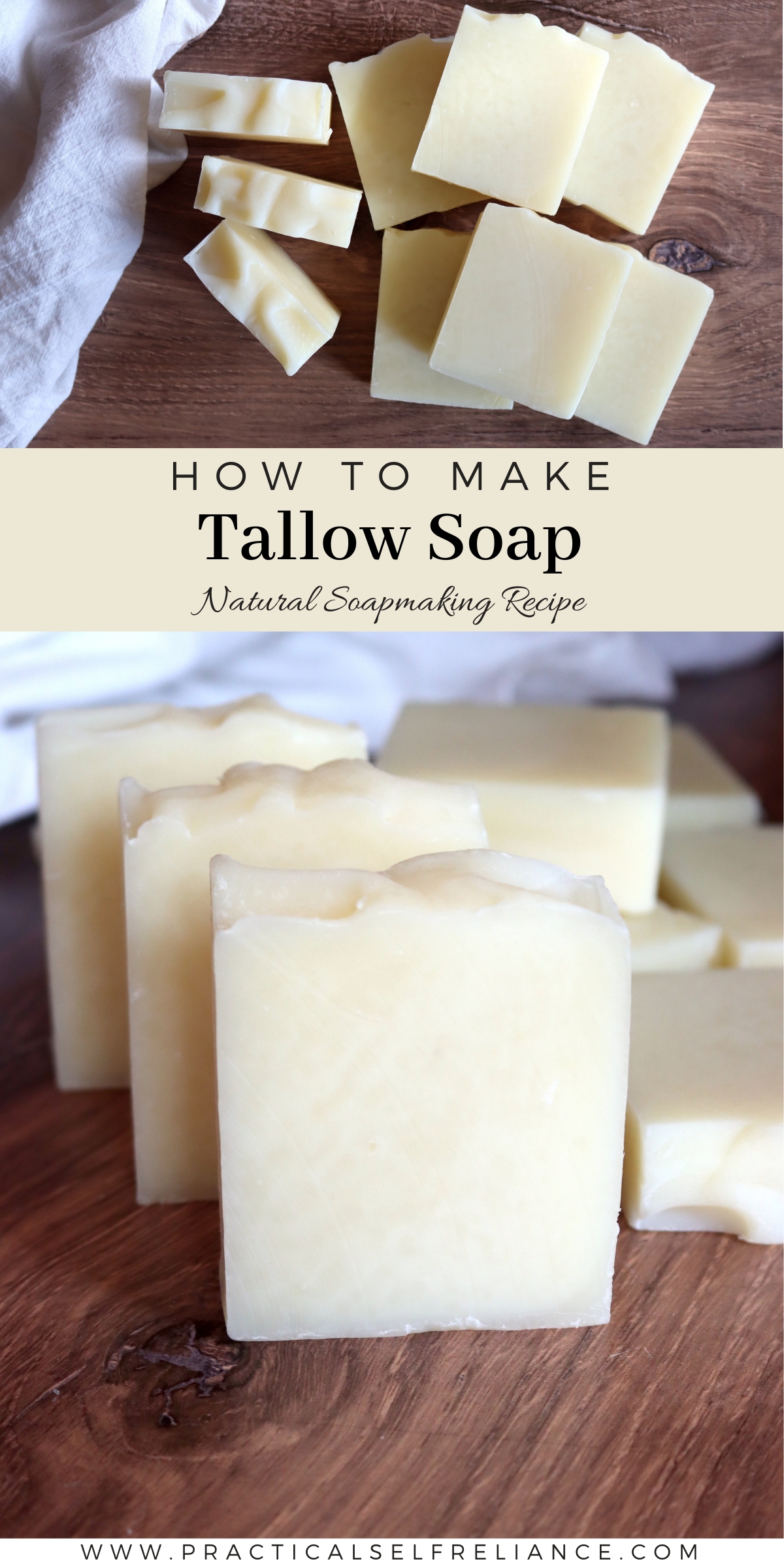
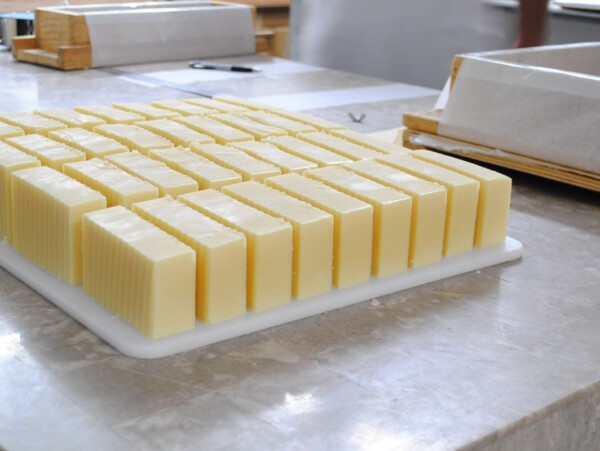
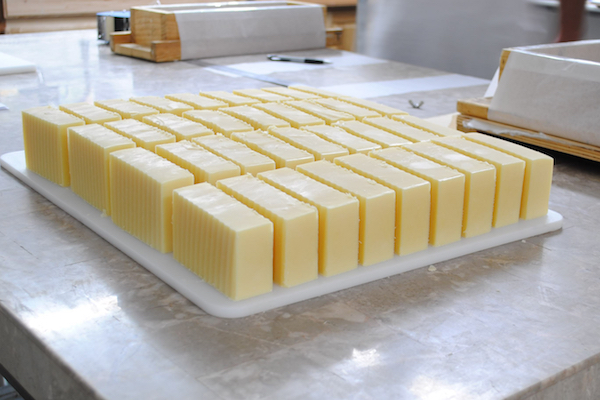
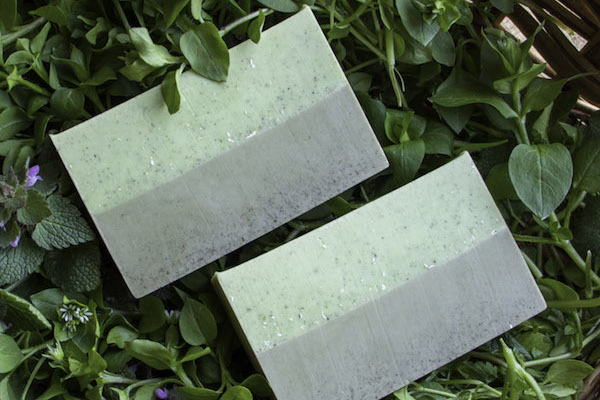
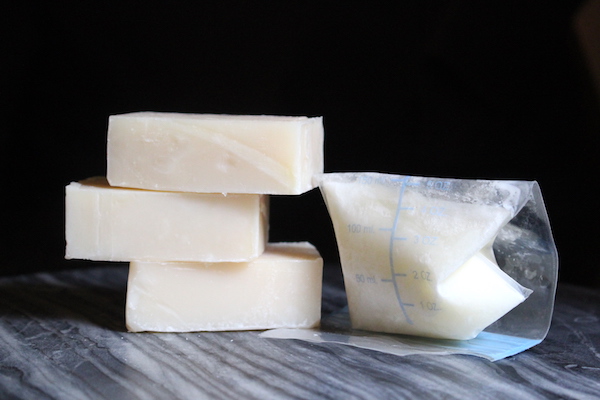





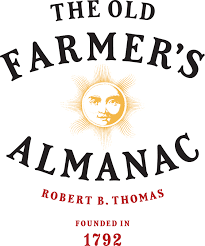

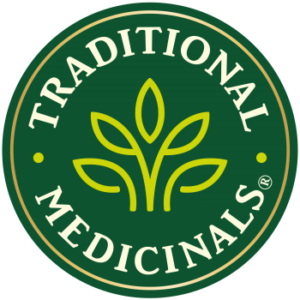

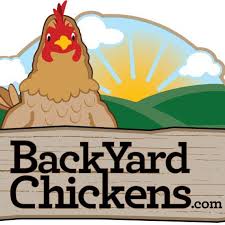
Thank you for the just in time info on soap making! What is the shelf life of the soap? Is it true that soaps that have higher fat content is better for the skin but has shorter shelf life? If I were to make lard soap for washing dishes and laundry, do I use 0 fat %, which might extend the shelf life?
If your hands are going to be in it, like with dishes, you’ll want to have it at least 2-3% superfat. That’ll prevent it from really drying out your hands as you’re doing dishes. For laundry in a washing machine, I’ve read that people make specialty 0% superfat soaps.
As to shelf life, usually the shelf life will depend somewhat on the oils you choose, as some are more stable than others. In general, all soap should last at least a year, and many will last around 3 years. It’s not that they “go bad” it’s just that they become a bit less effective at cleaning, and depending on the oils, the oils in the superfat can begin to go rancid eventually (that’s with very old soap). Making with lower superfat will help with rancidity, but it won’t help with loss of efficacy over time.
Wonderful made and easy and successful.
Wonderful, I’m so glad it worked for you!
Thank you for your post! I need to make soap out of lard. Wondering how would I adjust the recipe (for hand soap and laundry soap)?
I’m going to have a lard soap recipe for you soon, but until then, try this one: https://wholefedhomestead.com/wild-rose-old-fashioned-lard-soap/
Thank you very much for the info! Look forward to your post!
Thanks for this!
Couple of newbie questions:
(1) Why do you put peanut butter on electric fencing? Is the idea that animals eat it, get a shock, and learn to stay away? If so, are you doing that primarily for the livestock you want to stay inside the fence, or for the wild critters you don’t want entering the space with your livestock?
(2) What’s the benefit of painting a fruit tree trunk white? Does this discourage pests somehow?
Hey Justin,
So the peanut butter thing is so that predator animals (bears, etc) hit the electric fence on their most sensitive part, the tongue. If a bear hits an electric fence with their thick fur/hide, it’s not much more than a bee sting. They’ll ignore it. If you want to keep them away from your animals, you have to show them there’s food here (the peanut butter) but that they DEFINITELY don’t want to come for it. It’s something we do with electric around bee hives. (Or, something you can do to protect your poultry flock if you have chicken eating dogs in the neighborhood.). You’re not trying to get your animals to hit it, but the predators.
The second question, we don’t paint trees, so I’m less familiar with that one. There are a bunch of old wives tales about tree bark painting, and some say that latex based paints will keep out ants (causing them to slip) or deter boring insects, or stop fungal infections. Or simply to prevent sunscald on the bark in hot climates. I really don’t know if any of these are true or effective, and I did just look online…and I can’t find anything saying anything definitive about it.